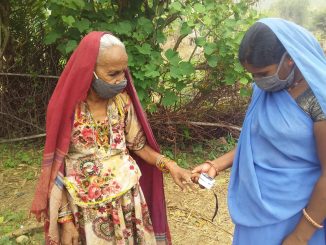The second wave of Covid-19 drastically affected the lives of every individual in India, with rural and tribal parts of southern Rajasthan severely hit. Unlike last year, the rural area experienced a huge surge in positive cases in remote villages, with a much higher death toll. The biggest challenge in fighting the virus lay in the lack of human resources and infrastructure for testing and treatment, lack of awareness, misconceptions and fear of death from vaccination.
The government frontline workers involved in spreading awareness and following up Covid-affected families in the villages did not have adequate safety gear, nor were they or the village volunteers adequately equipped to give out information, coordinate vaccination drives or spread awareness.
Despite the high infection rate, lack of adherence to the safety protocols (wearing masks, handwashing, and following social distancing) made the situation even more challenging. In many villages, the refusal to accept that Covid was a harmful disease led to devastating consequences among Rajasthan’s poor tribal population.
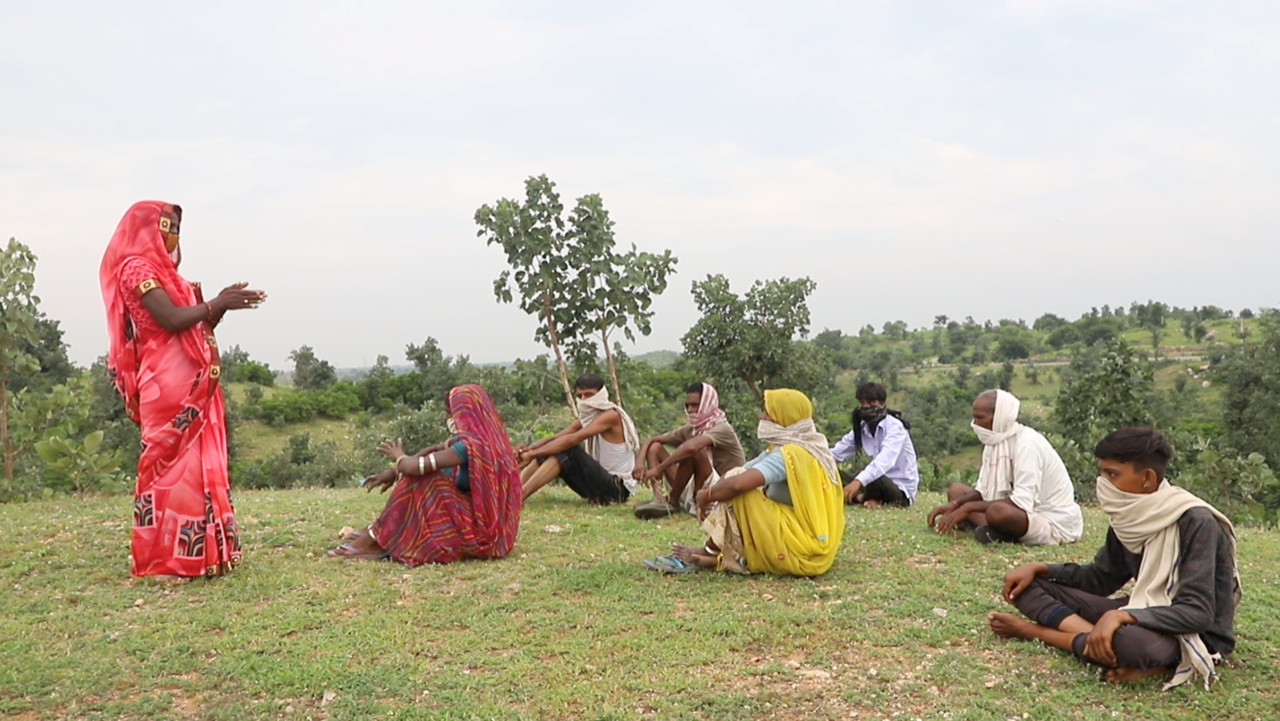
Seva Mandir’s response strategy focused on:
- Preventing the rapid spread of infection through awareness of Covid protocols, behaviour and myths, using a mix of communication tools including social media, podcasts, WhatsApp messages, audio-vehicle campaigns, short animation videos, pamphlets, wall paintings
- Addressing poor access to knowledge and facilities for Covid care and treatment through support for home isolation and Covid Care Centres
- Helping to keep frontline workers and vulnerable families safe by providing safety gear, food, sanitation and livelihood support
-
- 376,000 people reached through the publicity campaign
- over 1,000 families helped with self-isolation
- over 4,000 vulnerable families offered assistance
- 680 safety kits distributed to frontline health workers and volunteers, including masks, sanitiser, soaps
- SM staff helped government nurses identify and obtain medicine for Covid patients
- Improved health infrastructure of Covid Care Centres at 4 health facilities by facilitating oxygen concentrators and electricity backup
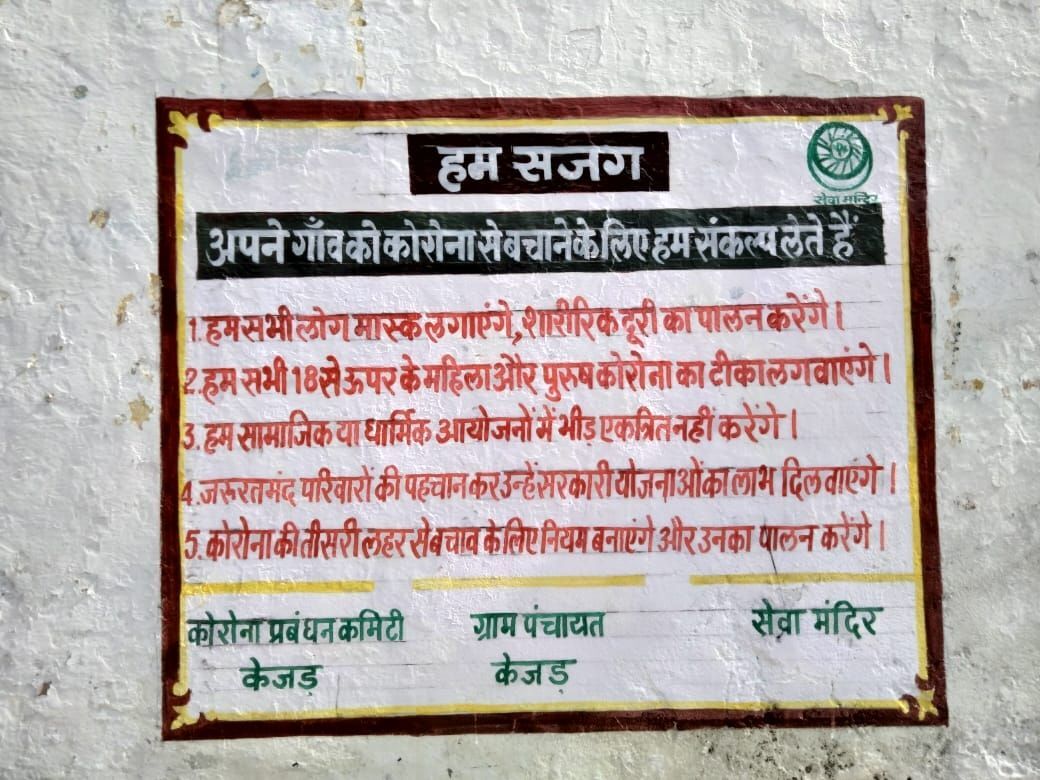
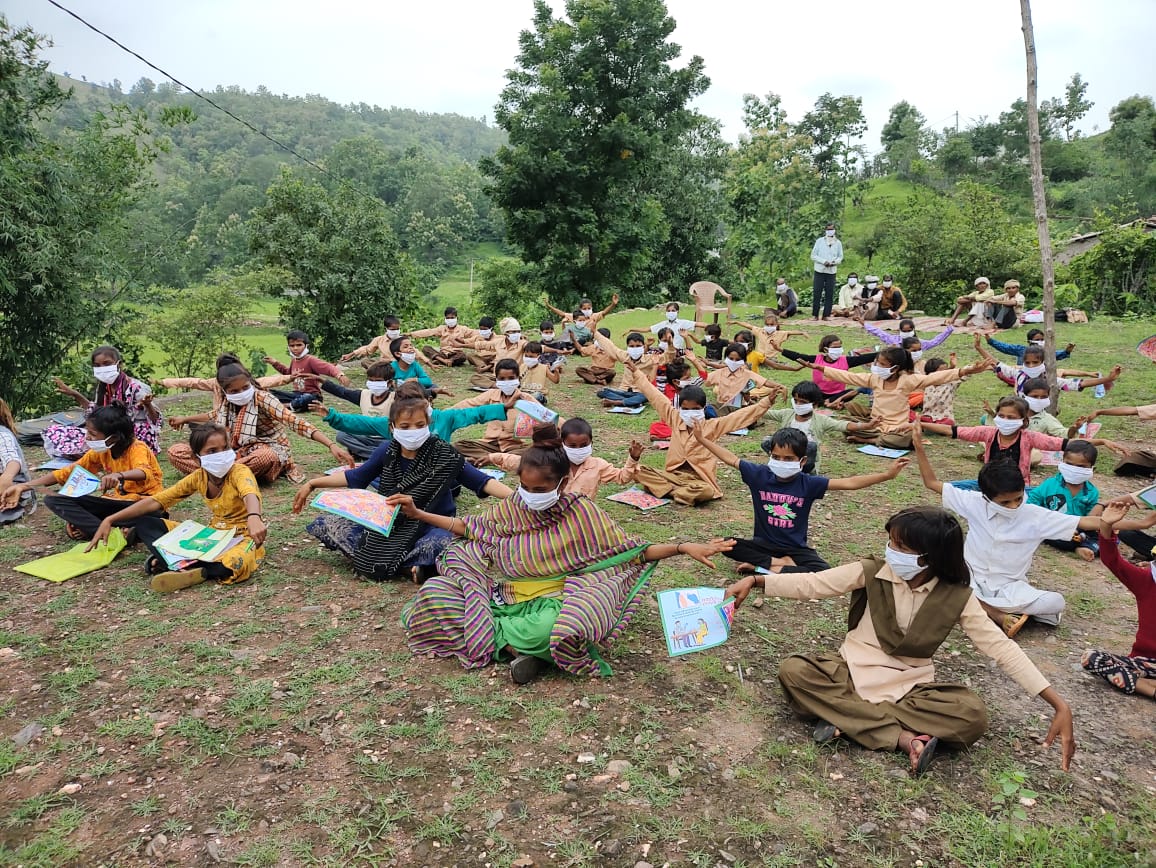
Seva Mandir’s preparedness
- A dedicated team was put in place to collect data on the spread of Covid-19 and the most crucial needs, which helped the NGO with assessment, better planning and implementation of core interventions
- Seva Mandir partnered with NGOs, government and rural health experts to improve its understanding and knowledge of Covid-19 strategies and communication methods
- Seva Mandir collaborated with Basic Healthcare Services (with whom the NGO runs a village hospital) to train village volunteers to understand Covid Care Centre requirements and organised a webinar for non-health NGOs in the district
- The second wave brought high levels of fear of death and infection across Seva Mandir’s staff (54 staff were infected and one died). Many of the NGO’s frontline team members were worried about the vaccination. A dedicated team worked to address these fears with the result that 375 staff members were vaccinated by the end of June.
- Seva Mandir designed easy and engaging educational content for staff, community workers and communities. Continuous feedback from communities helped them plan and improve these.
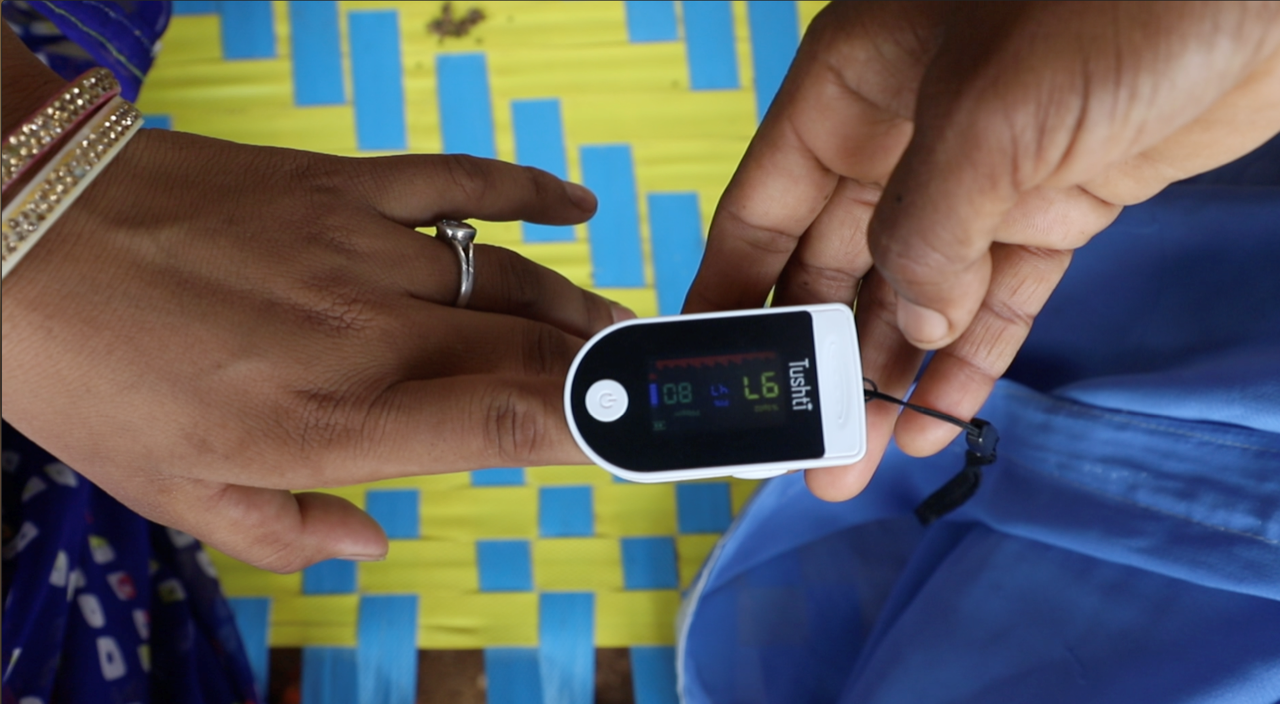
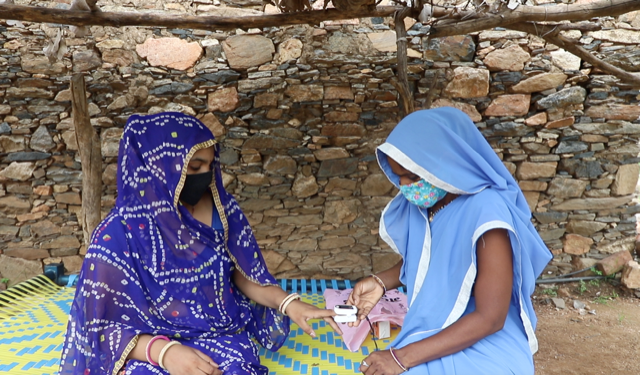
Seva Mandir is now planning for a potential third wave by focusing on prevention and preparedness models in the villages. The Hum Sajag initiative (the name means ‘we are alert, prepared and ready’) aims to build a trained and equipped resource base of 6,000 frontline workers and village volunteers in 1,500 villages. Establishing collective Covid management norms in villages through active village groups, youth, community and women leaders will be a core focus of this initiative.
Stories from the frontline
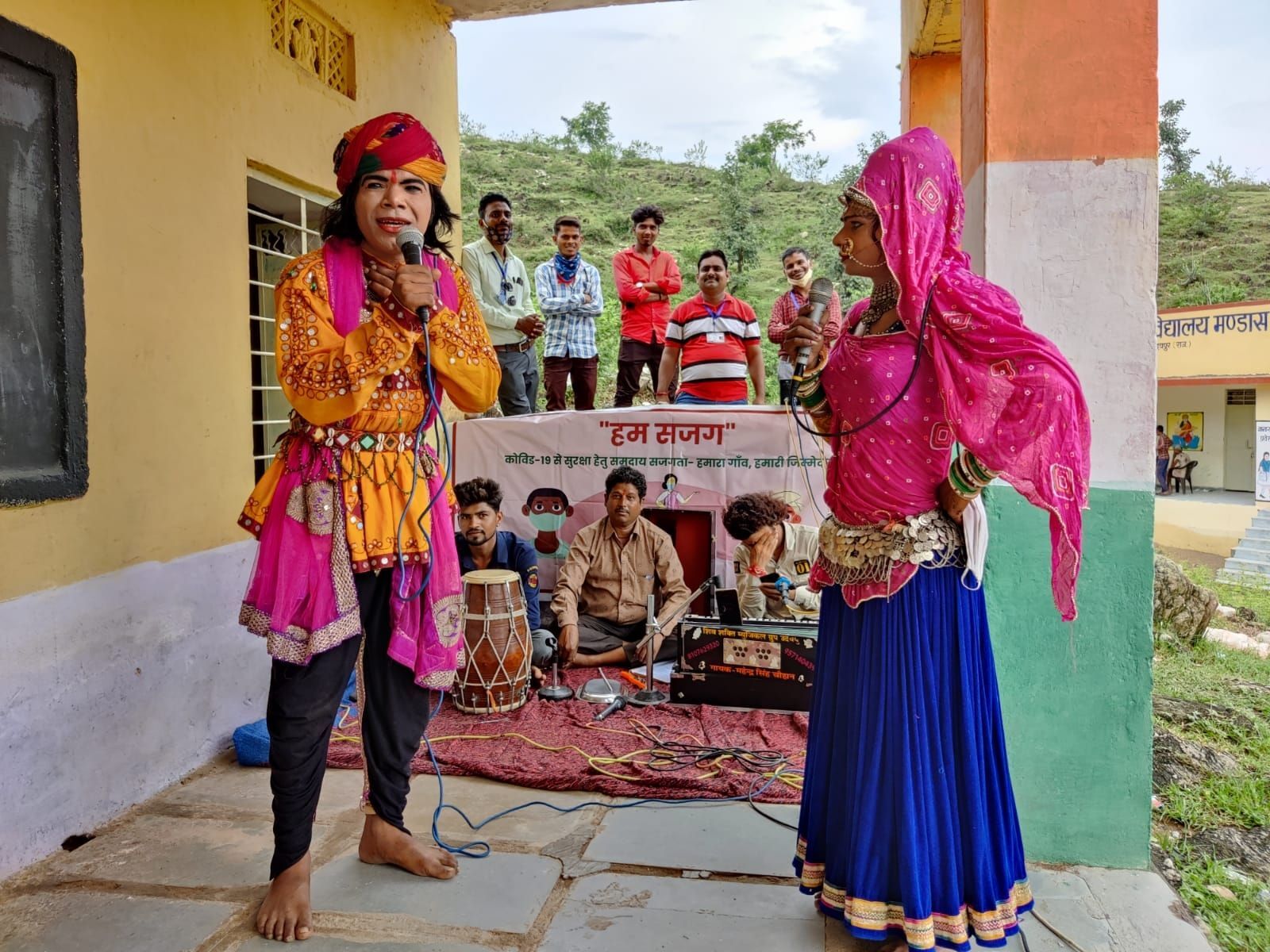
Leading by example
One of the major challenges was how to overcome people’s fear of death and sterility caused by vaccination. Myths were spread through local WhatsApp groups, and government health workers faced huge resistance in convincing people. Our village institution leaders helped to dispel these fears by taking the vaccine themselves. Madan Lal Bhil, Village Committee leader from Rod ka Guda, Kumbhalgarh, says, ‘In my village, when vaccination started, I saw no one was going for it as they were afraid it would make them sterile or cause death. To dispel this myth, I was the first to get vaccinated and then I encouraged more people.’ Social events like marriages became super-spreader events in the community, so our institution leaders campaigned extensively to convince people to avoid social events at this time.
Timely referral saves lives
Many people were afraid to go to the hospital for check-ups, treatment and vaccinations during the second wave. Frontline teams spent a lot of time talking to villagers and advising them to go for check-ups and treatment. Hira Ram (name changed) had symptoms of Covid-19 when the government healthcare worker checked on his family, so she immediately advised him to stay in a separate room, wear a mask and avoid going outside. But even as his condition deteriorated, he was reluctant to go to the hospital. A few days later, his elder brother also tested positive but did not seek treatment at the hospital and died. The team became very worried about Hira’s health but his family was still reluctant to seek treatment for. him. With the help and interventions of the village representatives, the family was eventually persuaded to take him to the hospital, where Hira was treated and then received post-Covid care support. He slowly began to recover and his oxygen levels returned to normal. He is much better now.
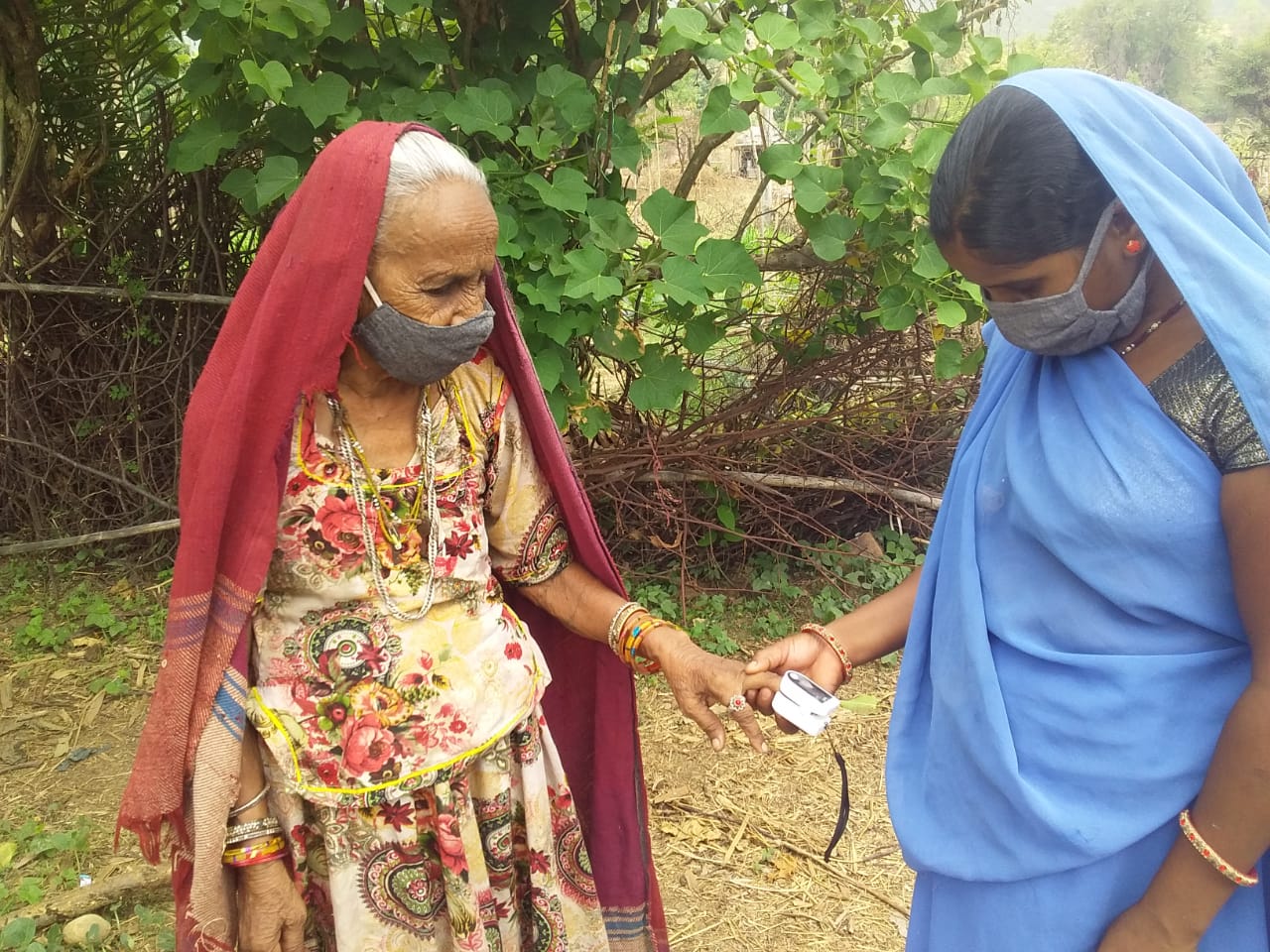
Reaching the last household
Babulal Ji began to self-isolate at home on 21 June after showing symptoms of Covid-19. His wife and daughter-in-law died last year, leaving only a son and a grandchild surviving. Once his son left for work, Babulal had no one to look after him.
It takes more than half an hour to walk to his house from the main road, over challenging, hilly terrain, crossing many small drainage lines and rivulets created by the rain. But the Seva Mandir team went to visit him, taking a food parcel weighing 7-8 kg, and they explained to him how to self-isolate.
Babulal told the Seva Mandir team, ‘If you hadn’t come with help, I’m not sure who else would have come.’ He was, however,reluctant to stop working: ‘I have to work on my land or else we will have nothing to eat for the rest of the year. The disease is making me tired, but that’s okay.’
Changing behaviour through street theatre
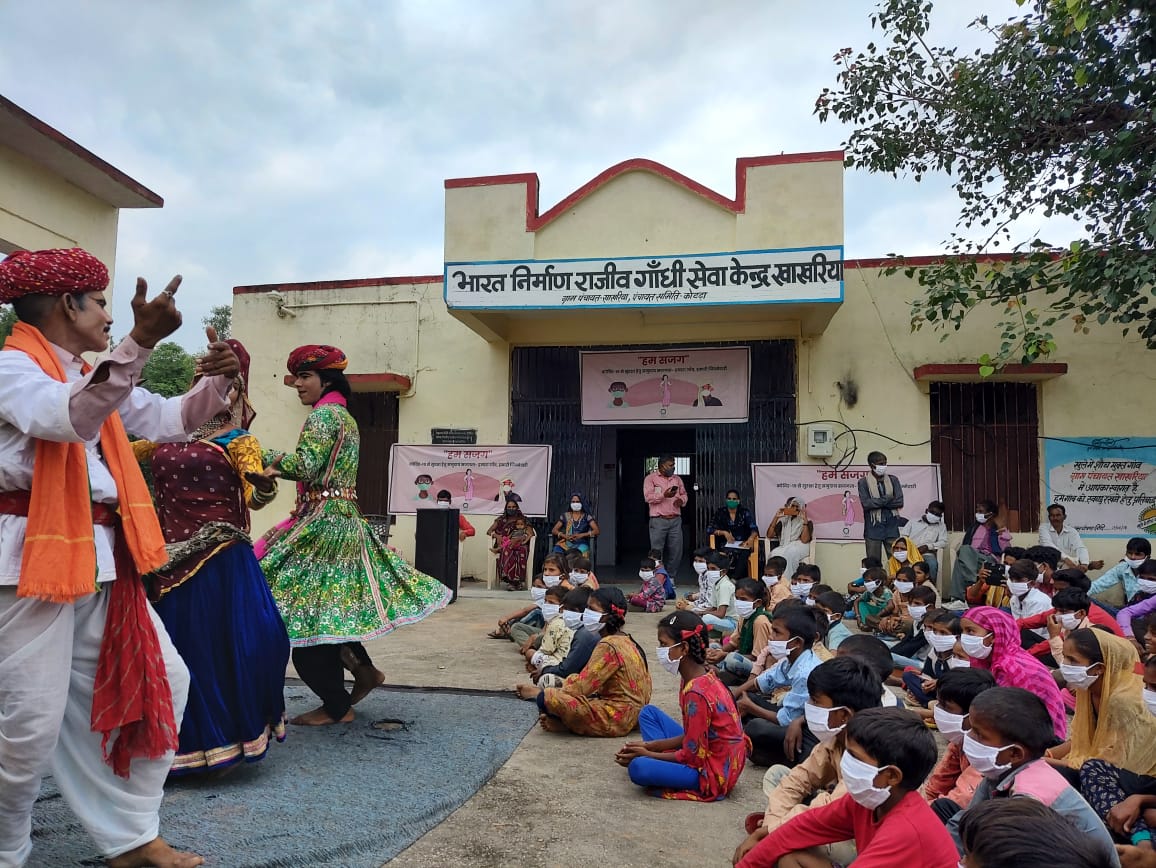
Using a combination of different traditional theatre forms and music, Seva Mandir is spreading awareness in the most vaccine-hesitant areas in southern Rajasthan. Actors use popular folk songs to talk about many of the myths and fears related to the vaccination. The story revolves around a young man returning from his place of work with visible symptoms of Covid and refusing either to isolate or go for a test. Through many folk songs and poetry, he is convinced that he must isolate and then, post-recovery, get vaccinated.
The audiences take some persuading. ‘If I breastfeed my child after getting vaccinated, the virus will come through my milk,’ said one woman during the performance. Pregnant and lactating women are very dubious about vaccination. This is just one of the fears Seva Mandir is trying to allay by means of theatre and discussion.
In one village visited by the theatre team, vaccination hesitancy was very high. There was a vaccination camp going on nearby, but few people were coming forward. After watching the play, many of the audience members were persuaded to go and get their jabs.
More quotes from the frontline
Banshi Lal, a school principal in Kotra, one of the most deprived regions in India: ‘When vaccination started in our area, I sat in camps for three days straight and not a single person came. I tried speaking with families to understand their reasons but they questioned my intentions. It seemed as if the community felt we were here to murder them through vaccination. Now, the fear is easing a bit and with this campaign I hope they will understand.’
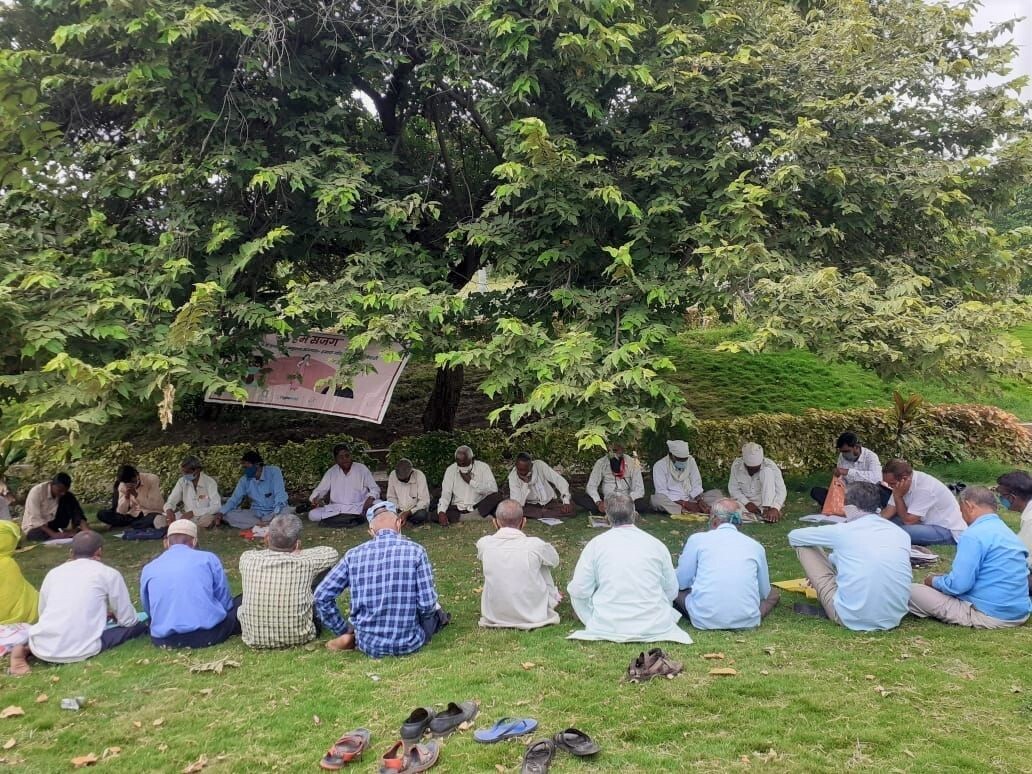
Roop Lal Meena, leader of the federation of community groups in Kherwara: ‘We have already set up teams in our villages which are speaking to people about vaccination in smaller groups. Everyone is working hard to boost the vaccination numbers.’
Rekha Devi, who runs a government day-care centre for preschool children: ‘All the village heads have been vaccinated, but they are not allowing the women in the house to get vaccinated. I am going to see them before camps to try to persuade them.’
Shivji, a performer in the theatre campaign: ‘I felt disheartened when a man walked out of the performance along with his daughter-in-law when we spoke about vaccination; people were really scared that we might force them to be vaccinated after the show. We need to work more on this theme.’
Champa Devi: Leading the frontline
Champa Devi is a government nurse in a remote community and has been working with families showing symptoms of Covid-19 and making sure that they go to health centres when necessary. Working very closely with Seva Mandir and community leaders, she leads her village community in explaining home isolation, symptom monitoring, and, most importantly, vaccination.
‘People are still afraid of vaccination. Changing behaviour so that people take Covid-19 as seriously as any other flu is my biggest challenge.’
Fighting fear in frontline teams
Frontline teams leading awareness drives in villages were themselves sceptical about vaccination. In one of the training programmes a zonal worker said, ‘Although I was asked to emphasise the importance of taking vaccines, I was myself scared of getting one. I heard stories from my family that people were dying after vaccination and many developed a fever. After repeated training and conversations with my team, I decided to get vaccinated but my family was still against it. I can understand why women in my area are so afraid, as it was hard enough for me and then my family to be convinced.’
Community leadership bringing positive change
The Hum Sajag campaign encourages communities to build leadership and work together to decide how best to manage the Covid situation. The women from one Self-Help Group decided to mobilise to fight the fear of vaccination. They carried out an extensive door-to-door campaign and identified 150 unvaccinated people. The women then asked their local coordinator to organise a vaccination camp in their area. 405 people turned up and were vaccinated in a day!
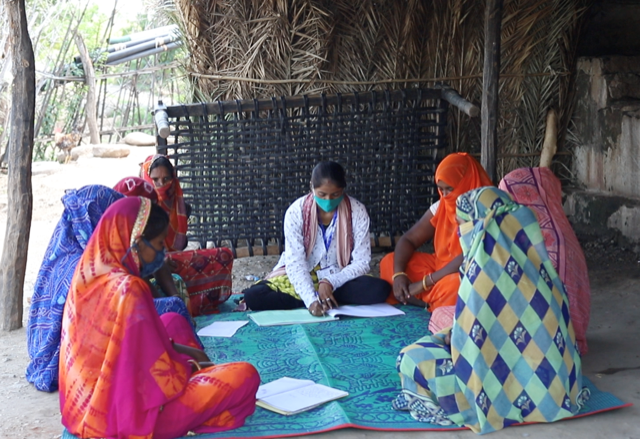
Training health workers
The second wave became a major medical disaster and there is fear of a third wave. We have an opportunity to plan and implement an effective preventive programme to minimise its impact on marginalised communities. The Hum Sajag initiative aims to build a trained and equipped human resource base of 6,000 frontline workers and village volunteers in 1,500 villages spread across 14 blocks of Seva Mandir’s work area. Through smaller group meetings and village-level training sessions, Seva Mandir is training frontline staff to understand home isolation and symptom-monitoring through the use of oximeters and thermometers.
‘I have not received this training anywhere before. It is very useful information for villages. Last time, we did not know how to handle the situation in villages. Hopefully, if a third wave comes, we will be better prepared,’ says a government nurse in Jhadol.

